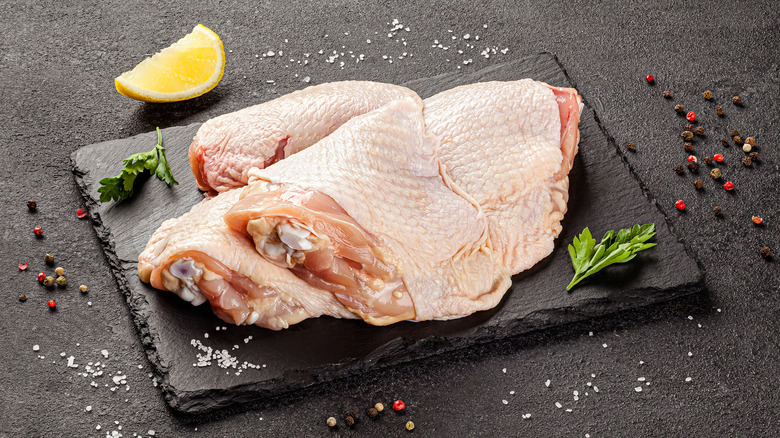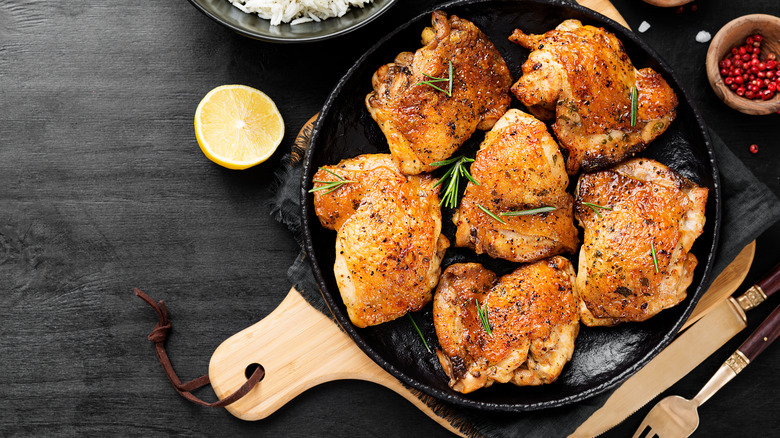Ina Garten's Under-The-Skin Tip For Flavoring Chicken
If there's one lesson to take from Ina Garten about cooking chicken, it's the value of keeping the skin on. Over the past 60 years, we've collectively transitioned from buying whole chickens to favoring the convenience of boneless, skinless chicken breasts. This choice might cut about 15 minutes from our cooking time compared to its skin-on counterparts, but it comes with drawbacks. While removing the skin may seem like a small change, it significantly affects the dish's texture and flavor.
One of the unique, useful qualities of cooking with skin-on chicken is that you can form it into a pocket to be filled with flavor. Garten is the master of this method, and her chicken with goat cheese and basil recipe is a prime example of why you should think twice about removing that flavor saver.
All you need to do is use a finger to gently separate some of the skin from the meat while keeping it partially attached along one side, then stuff it with your favorite flavor-boosting ingredients, such as cheeses, herbs, and spices. The skin acts as a protective layer that helps retain moisture and absorb seasonings without becoming soggy.
Why you should choose skin-on chicken
Ina Garten's technique for flavoring chicken utilizes the skin to create a convenient space for keeping seasonings positioned close to the meat. This trick is about much more than just functionality, though. Chicken skin offers a plethora of benefits when it comes to flavor, texture, and nutrition.
One of the primary advantages of skin-on chicken is its impact on the moisture content in the meat. As the chicken cooks in the hot environment of an oven, the skin wraps around it like a blanket, sealing in the meat's natural moisture and stewing it in its own fat. Unlike skinless chicken breast, which is prone to becoming dry and stringy, the result of cooking with skin-on chicken in this way is a deeply tender and juicy piece of meat that melts in your mouth.
In contrast to the almost creamy consistency of the chicken, the cooked skin adds a thin, crispy component that offers a delicious diversity of textures to the dish. It also boosts the protein content of the overall meal, while increasing intake of important vitamins and minerals such as iron, potassium, and calcium.
More Ina Garten tips for a flavorful chicken dinner
Ina Garten offers numerous tips for cooking a perfect chicken every time. Since her preferred cut of meat features two distinct components — flesh and skin — unlike the single element of a skinless breast, she pays extra attention to preventing the skin from becoming soggy. One of her key techniques is to first pan-fry the chicken with some butter or oil in a skillet on the stovetop for a few minutes before baking it. This method gives the skin a golden color and a crispy texture that intensifies as it renders in its own fat in the oven. The best part? That fat then melts down into the meat, making it extra succulent.
While the chicken cooks or before serving, Garten recommends pouring sauces around the meat, not directly on top, to maintain the skin's delightful crispiness rather than making it chewy from excess moisture. Her versatile approach to cooking skin-on chicken is well-suited to a variety of ingredients. If you're looking to explore beyond Garten's goat cheese and basil recipe, consider trying roast chicken with lemon curd for an added burst of bright, citrusy tartness.



